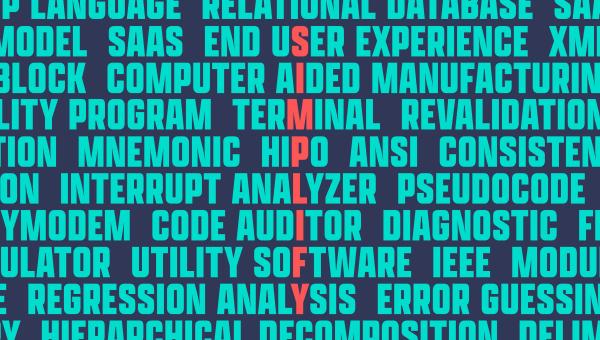How to Become a Successful online Course Designer: Essential Skills & Strategies
If you’re passionate about education technology and want to play a pivotal role in shaping digital learning experiences, becoming an online course designer is a smart and rewarding career choice. With the rapid expansion of e-learning in universities, colleges, and schools worldwide, online course designers are in high demand.This guide explores how to become a successful online course designer, covering essential skills, practical strategies, key benefits, and tips to help you land a role in this dynamic field.
What Does an Online Course Designer Do?
An Online Course Designer—sometimes referred to as an instructional designer or e-learning developer—creates engaging, effective, and accessible digital learning experiences. Working closely with faculty, subject matter experts, and educational technologists, they transform conventional classroom content into interactive, online courses tailored to diverse student needs. Their responsibilities in universities,colleges,and schools include:
- Conducting needs analysis to identify learning objectives
- Developing instructional materials such as videos,quizzes,and multimedia presentations
- Designing course structures that maximize student engagement and retention
- Utilizing Learning Management Systems (LMS) such as Moodle,Canvas,or Blackboard
- Ensuring accessibility and inclusivity for all learners
- Analyzing course data to improve learning outcomes
Key Skills required to Become a Successful Online Course Designer
Becoming an outstanding online course designer requires a diverse skill set. If you aspire to excel in education technology roles at universities, colleges, or schools, focus on developing the following core competencies:
1. Instructional Design Fundamentals
- Understanding learning theories (e.g., BloomS Taxonomy, ADDIE Model)
- applying best practices for curriculum growth
- Structuring modules, lessons, and assessments effectively
2. Technology Proficiency
- Mastery of popular Learning Management Systems (LMS)
- Familiarity with multimedia tools for creating engaging content (e.g., Articulate storyline, Adobe Captivate, camtasia)
- Basic knowledge of HTML, CSS, or e-learning authoring tools
3. Interaction & Collaboration
- Strong written and verbal communication for clear course instructions
- Effective collaboration with faculty, subject matter experts, and IT staff
- Providing constructive feedback to improve course quality
4. Project Management
- Planning and organizing complex course development projects
- Meeting deadlines while juggling multiple tasks
- Adapting to evolving stakeholder requirements
5. Data analysis & Assessment
- Using analytics to monitor learner progress and engagement
- Refining courses based on feedback and assessment data
Step-by-Step Guide: How to Become an Online Course Designer
If you’re looking to start or advance your career as an online course designer in a university, college, or school, follow these actionable steps:
- Pursue Relevant Education:
- Consider degrees in instructional design, education technology, curriculum development, or related fields.
- Certification programs in e-learning or instructional design can boost your credentials.
- build a Solid Portfolio:
- Showcase sample online courses, lesson plans, and multimedia content you’ve created.
- Demonstrate proficiency with LMS platforms and authoring tools.
- Stay Current with EdTech Trends:
- Subscribe to industry journals, attend webinars, and join professional associations to stay updated.
- Gain Practical Experience:
- Volunteer, intern, or seek contract work to gain hands-on experience designing online courses.
- Participate in campus initiatives or collaborate with instructors to reimagine traditional curriculum for online environments.
- Develop Soft Skills:
- Engage in activities that boost collaboration,creativity,and problem-solving.
- Network with Industry Professionals:
- Attend education conferences, join online forums, and connect with instructional designers on professional platforms.
Essential Strategies for Excelling as an online Course Designer
Once you land your frist role as an online course designer, use these strategies to stand out and deliver transformative learning experiences:
- Adopt a Student-Centered Approach: Design courses that accommodate various learning styles and prioritize student engagement.
- Ensure Course accessibility: Incorporate worldwide design principles, making content usable for learners with disabilities.
- Leverage Multimedia: Use videos,podcasts,animations,and infographics to create dynamic,motivating courses.
- integrate Active Learning: Encourage student interaction through discussions, projects, gamified activities, and peer assessments.
- Utilize Feedback: collect regular feedback from students and instructors to refine and enhance course quality.
- Embrace Continuous Improvement: Stay open to experimentation, regularly updating courses to reflect new developments in education technology.
Benefits of a Career in Online Course Design
Pursuing a career as an online course designer in education technology comes with numerous advantages:
- High Demand: The surge in digital learning ensures steady demand for skilled course designers in universities, colleges, and schools.
- Impactful Work: Shape the future of education by creating learning experiences that reach diverse,global audiences.
- Adaptability: many positions offer remote or hybrid work options, supporting work-life balance.
- Continuous Learning: Opportunity to expand your knowledge of instructional technology, pedagogy, and media production.
- Collaborative Surroundings: Work with multidisciplinary teams and inspiring educators to innovate and solve real-world challenges.
Practical Tips for Aspiring Online Course Designers
Set yourself apart in job interviews and faculty collaborations with these practical tips:
- Curate a Digital Portfolio: Host exemplary work samples on a personal website to demonstrate your range and creativity.
- Highlight Measurable Results: In project descriptions, include positive learner outcomes, engagement metrics, and other achievements.
- Brush Up on Accessibility Standards: Familiarize yourself with guidelines like WCAG to ensure your courses meet accessibility requirements.
- Master Both Synchronous and Asynchronous Design: Balance live virtual sessions with self-paced materials to accommodate all learners.
- stay Adaptable: Be ready to pivot as technology and educational priorities evolve.
Conclusion: Your Path to Becoming a Successful Online Course Designer
Stepping into the role of an online course designer is both an exciting and meaningful career move, especially as educational institutions worldwide continue to adopt digital solutions. By developing strong instructional design skills,mastering education technology,and adopting proven strategies outlined in this guide,you’ll be well-equipped to excel in universities,colleges,and schools. Focus on creating engaging, effective, and accessible learning experiences—and your efforts will help shape the future of education. As you grow in this essential edtech role, remember that successful online course designers are lifelong learners ready to embrace new challenges and innovations.

